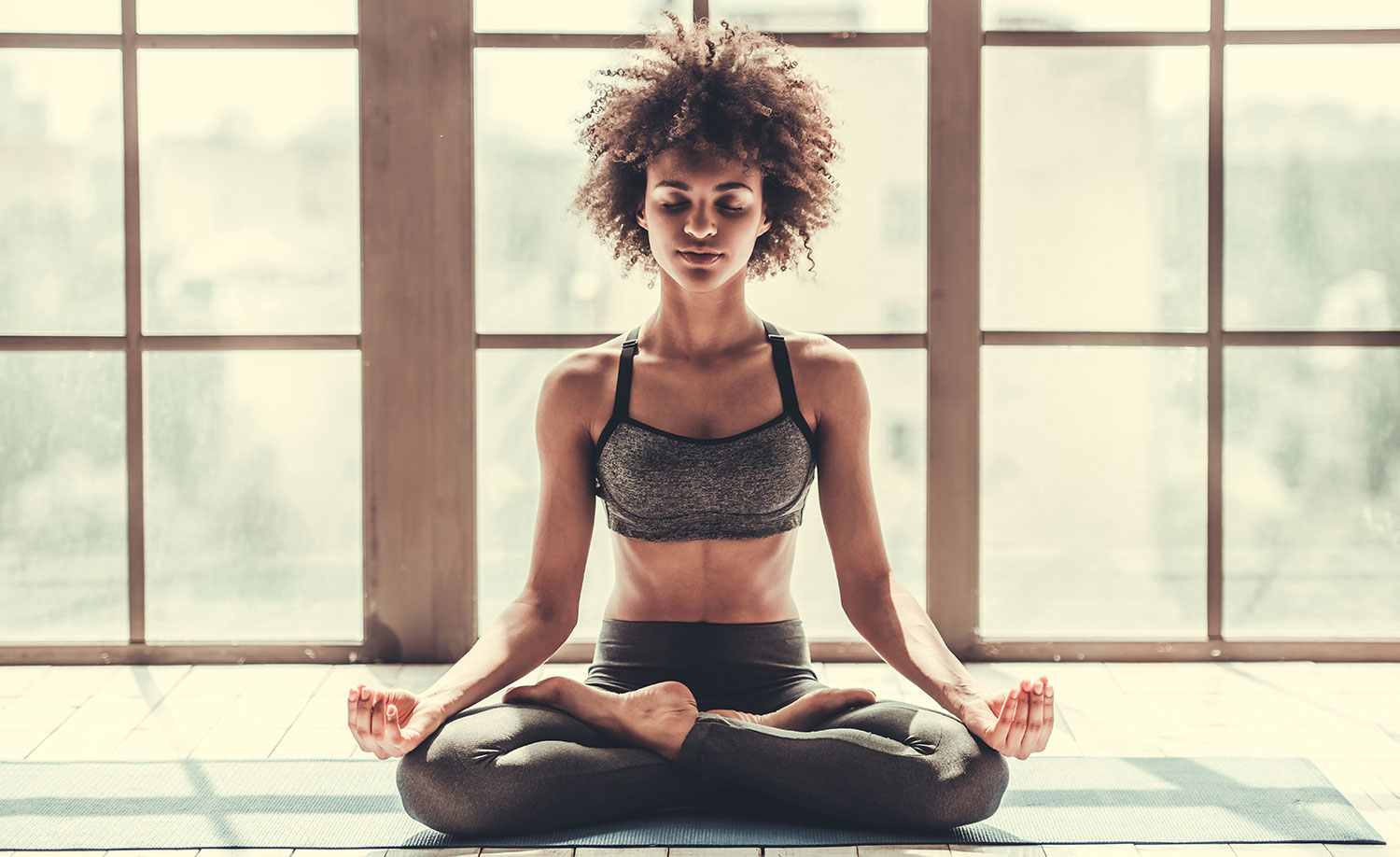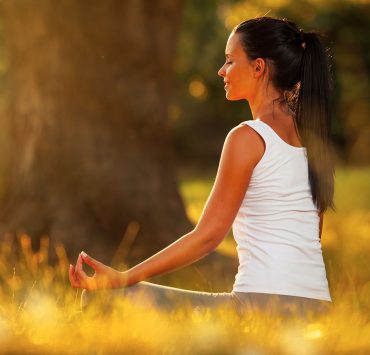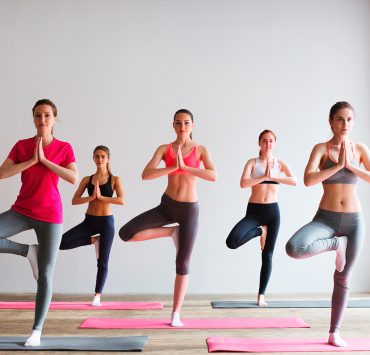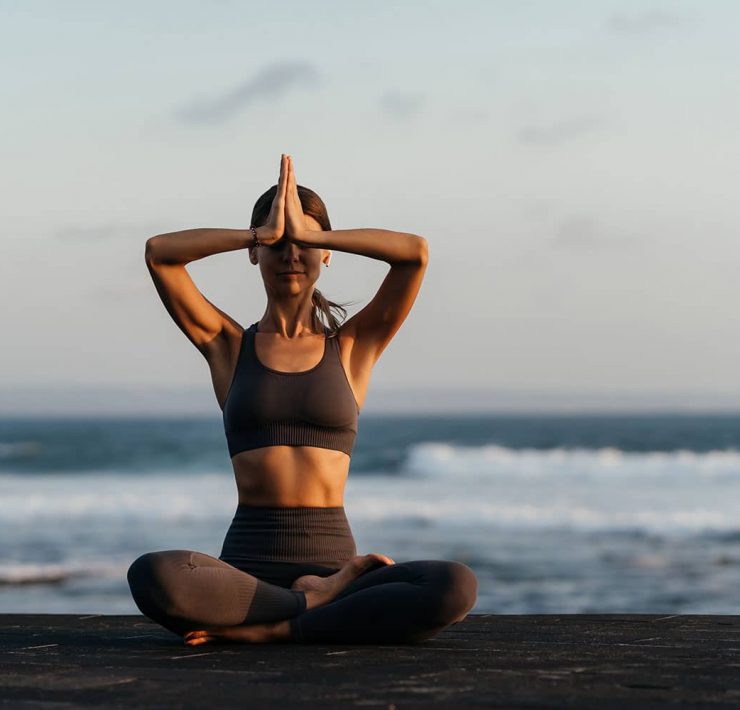
Rose graduated with a degree in Anthropology, which takes her…
Chances are, you’ve heard how beneficial meditation is for your wellbeing and health… but you’re still not meditating. Meditation has been practiced for thousands of years and within the last few decades more research has come out in support of its wide array of physical, mental, and emotional benefits. Meditation seems simple: Sit, be still, and get healthy! Yet meditation is much more complicated than that, and its long history may make it seem even more mysterious to potential meditators.
The mystery of meditation could be why such a seemingly simple practice eludes so many people. In order to learn how to meditate, a person must first understand what meditation is, why they meditate, and the many different kinds of meditation. This background knowledge will lead to a sustainable and meaningful meditation practice.
What is meditation?

The first, and maybe most complicated question, is what is meditation? Meditation is a practice used to reach a state of calm, grounding, and spiritual awareness. It can reduce stress and anxiety, and help achieve clarity of mind. Meditators become in tune with their own mind and body by sitting with their thoughts and emptying the mind. However, the ways people meditate are as vast as the reasons they initially come to meditation.
History of meditation
Meditation has been practiced for thousands of years, with the earliest written records of it reaching back to the 1500 BCE Vedantas. However, scholars believe it was around for thousands of years even prior to that. The word “meditate” is derived from a Latin word which means “to ponder”; however it is also referred to as “dhyana” within the Ashtanga yoga tradition. It is impossible to trace the exact origin of meditation, but its history is filled with various religious practices across different countries. These include Taoist China, Buddhist India, Buddhist Japan, Buddhist Nepal, and more. In relation, it is only recently (from the 19th century onward) that meditation was introduced to the West.
Why meditate?

After reading about what meditation is, it may be clear why so many people are drawn to meditation. For centuries, people have come to meditation for its relaxing and calming benefits. However, meditation also carries a spiritual component with it, and many people come to meditation for the spiritual or religious significance. Still others, within the stress epidemic of the Western world, approach meditation as a way to balance and cope with a hectic lifestyle. Whether it is physical, spiritual, or emotional, there are as many reasons to meditate as there are benefits you can receive from it.
Health benefits of meditation
There are many health benefits of meditation, and within the last few decades there has been much research to support it. So much so, in fact, that some health insurance companies are beginning to cover meditation and yoga classes. Although this research is very important, it is just confirming health benefits that meditators have felt for thousands of years. Some recorded health benefits of meditation include:
• Blood pressure control
• Chronic pain and fibromyalgia management
• Cessation of IBS and other gastrointestinal disorders
• Fights addictions such as smoking and binge eating
• Improves sleep
• Improved immune function
There are many other health benefits to meditation and more research is coming out to support these benefits every day.
Emotional benefits of meditation

One of the most central benefits of meditation is its ability to control and reduce stress, anxiety, and depression. It is often these profound emotional benefits that draw people to meditation in the first place.
Many studies, on thousands of human participants, have found that meditation can reduce clinical depression. One study also found a long-term change in brain activity of meditators, with increased activity in areas of the brain that support positive emotions. Meditation also plays a large role in reducing anxiety and stress, thanks to its impact on certain neurotransmitters.
Spiritual benefits of meditation
Not mentioned as much in the research community, but equally important to meditation, are the spiritual benefits. As mentioned, meditation has a long history that is tied to religious practices, including Buddhism and Taoism. However, meditation’s spiritual effects can be applied to anyone from any religion or lack thereof. By focusing inward and stilling the mind, meditators become more in tune with their own unique Self. They notice the fluctuations in their spirit, and maybe begin to acknowledge and feel a connection to the universe around them.
How to meditate: types of meditation to try

Understanding the history and benefits of meditation is important, but this may not clarify how to actually practice meditation. There are many types of meditation to choose from, each with its own style, procedure, and even specific benefits. Because meditation, in general, has been practiced for over 5,000 years, it was inevitable that different sects would develop, leading to distinct types of meditation. The different types of meditation exist alongside each other and do not detract from one another. Instead, meditation practitioners may choose the type that is most suited to their personality. They may practice more than one type, or be more drawn to different types throughout their life, depending on changing circumstances. Listed below are seven different types of meditation and how to practice them, but there are many more.
Transcendental meditation
Transcendental meditation is a simple type of meditation that can be practiced twice a day when the meditator feels able. In essence, it is a silent mantra meditation. The person chooses a mantra, or small phrase, and repeats this phrase in their mind. As the phrase is repeated, and complete focus is brought to the mantra, other thoughts dissipate. Eventually, even the mantra will dissipate and the mind will be silent. This simple form of meditation originated in Vedic India.
Heart rhythm meditation

In heart rhythm meditation, also referred to as cardiac coherence, the practitioner focuses on both the breath rate and heart rate. They note the energy and pulse of the heart and focus inward on the physical body. It is known to have profound effects on the physical body as well as the emotional and spiritual states and is often referred by doctors to people with cardiac or stress disorders. To practice heart rhythm meditation, the practitioner measures their inhales and exhales. The recommended length is five second inhales and five second exhales (or six breath cycles a minute). This should be continued for five minutes (or longer) twice a day. There are other ways to control the breath in heart rhythm meditation, which are detailed here.
Kundalini meditation
Kundalini meditation is intrinsically tied to Kundalini meditation – and it is very different from your “average” yoga class. You should be aware of the differences before you sign up for Kundalini meditation. The goal of Kundalini meditation is to awaken the specific “Kundalini energy” that resides at your sacrum. There are many variations in how to do this so one class will be different from another. Likely you will sit cross-legged, and using a combination of breathing and mantra techniques you will attempt to control the mind “chatter,” or chitta vritti.
Mindfulness

‘Mindfulness’ is a buzzword in the West, but it is just a Western term for the thousands of years old practice of meditation. Similar to other meditation methods, mindfulness aims to bring focus to the present moment. Worries about the past and future are forgotten and the mind is quieted and brought to focus on now. As the mind wanders, the meditator is kind to themselves, acknowledges thoughts and then lets them go. The quality and quantity of intrusive thoughts also give an insight to the state of the inner being. Mindfulness meditation can either be done in the traditional cross-legged sitting position, or it can be brought to the daily actions of everyday life. Mindfulness as a technique can be used when making daily decisions, and bring a sense of peace and calm to the everyday.
Movement meditation
Similarly to mindfulness, movement meditation (also called active or dynamic meditation) can be brought out of the sitting position and into a more fluid and active form. There are many types of movement meditation, including Tai Chi, Qi Gong, and other everyday activities such as walking or swimming. The breath is used to guide each movement. Movement meditation brings awareness and presence to each movement, enhancing both the movement and the feeling of focus within it. With practice, this feeling of presence can be brought to other areas of life as well.
Visualization meditation

Visualization meditation may feel like a more ethereal form to beginners. However, it may be the most useful for people who are stressed and anxious and want to perform “better” in everyday activities and at work. It was even used on Olympians to visualize their performance prior to competing, to improve focus during the actual event. During visualization meditation, a calming scene may be evoked and the meditator asked to visualize it in their mind. Alternatively, the meditator may visualize themselves achieving some goal or carrying out some everyday task. The meditator may also practice “emotional visualization” where they envision such emotions as “loving kindness” which then bring peace and serenity.
Chanting meditation
Chanting meditation is another popular form of meditation that is easily accessible to beginning meditators, although they may feel more comfortable in a class or using a recording than chanting on their own. Chanting meditation is also referred to as japa. It involves choosing a meaningful yogic mantra and chanting it aloud. The practitioner focuses on their voice, the words, and if in a group, the sound of all the voices combined. Eventually, this focus brings attention inward, where the mind is stilled and connection to the inner self is felt.
Learn how to meditate

Beginning your meditation practice can be a confusing time. With so much information on the internet, and thousands of years of documents on meditation, and dozens of different kinds of meditation, just starting is half the challenge. As you are learning how to meditate, be kind to yourself and don’t force yourself to sit for long periods of time at the beginning. Think of meditation like training for a marathon: You wouldn’t run 26 miles on your first day of training if you’ve never run, so why force yourself to do the equivalent with meditation? Begin with only a couple minutes sitting per day. You can use a timer on your phone, or different apps that provide guided meditation.
Even more beneficial than trying to guide yourself through this challenging process, however, is seeking a teacher or guru to help you. Ask around in your community and you will likely find meditation classes. At first it may seem silly to pay money to sit in a room in silence. However, once you begin your meditation journey you will find how incredibly helpful it is to have a teacher guide you, and other students to keep you accountable. You may want to begin with Yin Yoga classes or Beginner’s mediations classes that provide you with short periods of guided meditation. As you progress, your guru will guide you through the challenging and rewarding process that is the inner journey of meditation.
Problems with meditating and how to solve them
As discussed, meditation is a very challenging practice. Your personal challenges will range from the physical to the spiritual to the emotional. Only the dedicated will develop a continuous meditation practice, and it is only with long term practice that the deepest benefits of meditation are reached. Below are some common problems with meditation and how you can solve them.
Back ache
Many people experience back ache during meditation, especially at the beginning. This can be distracting and make meditation even more difficult for beginners. To start, you can meditate lying down or sitting against a wall. It may also help to sit with your sit bones on the edge of a sturdy pillow, with your legs leaning off. This will ease the pressure on your low back. You can also practice core-strengthening exercises, or focus on planks and chatturangas in your yoga practice, in order to build core strength and make it easier to sit for longer periods of time.
Racing thoughts

If you find that your mind is full of racing thoughts when you try to meditate, you may want to focus on something in particular instead of diving straight into meditation. Instead, choose a guided visualization from a recording or a live class. You can also focus on your breath, counting each inhale and exhale. A third option is to try chanting meditation. Choose a quiet place with limited background noise. Everyone has days where it is more difficult to quiet the mind, so be kind to yourself. Just because you have racing thoughts one day does not mean you cannot try again tomorrow.
Making time
Perhaps the biggest challenge to meditation is making time for it. Many people say they don’t have time for meditation, but then spend hours on their phone or procrastinating. If you aren’t already familiar with the benefits of meditation, it can be difficult to see the worth in making time for “just sitting and doing nothing.” Instead, treat meditation like a habit. You likely brush your teeth morning and night, so try to meditate for two minutes after you brush your teeth. Pairing meditation with another habit, and starting small, will help you make time for it. Eventually you will find that you need meditation in your daily life and it will be easier to make it a priority and make time for it.
Conclusion

Meditation is a complex practice that is both a challenge and a reward. Separate to these external labels, though, the true value of meditation is bringing the meditator into the present moment and enabling them to experience the universe as it truly is. Meditation has bountiful health, emotional, and spiritual benefits. Beyond that, though, the meditator will come to know their Divine Self, and the connection they hold to the universe.
What's Your Reaction?
Rose graduated with a degree in Anthropology, which takes her understanding of basic human needs to a whole new level. Her intelligence and passion for healthy living is reflected in her written work.














